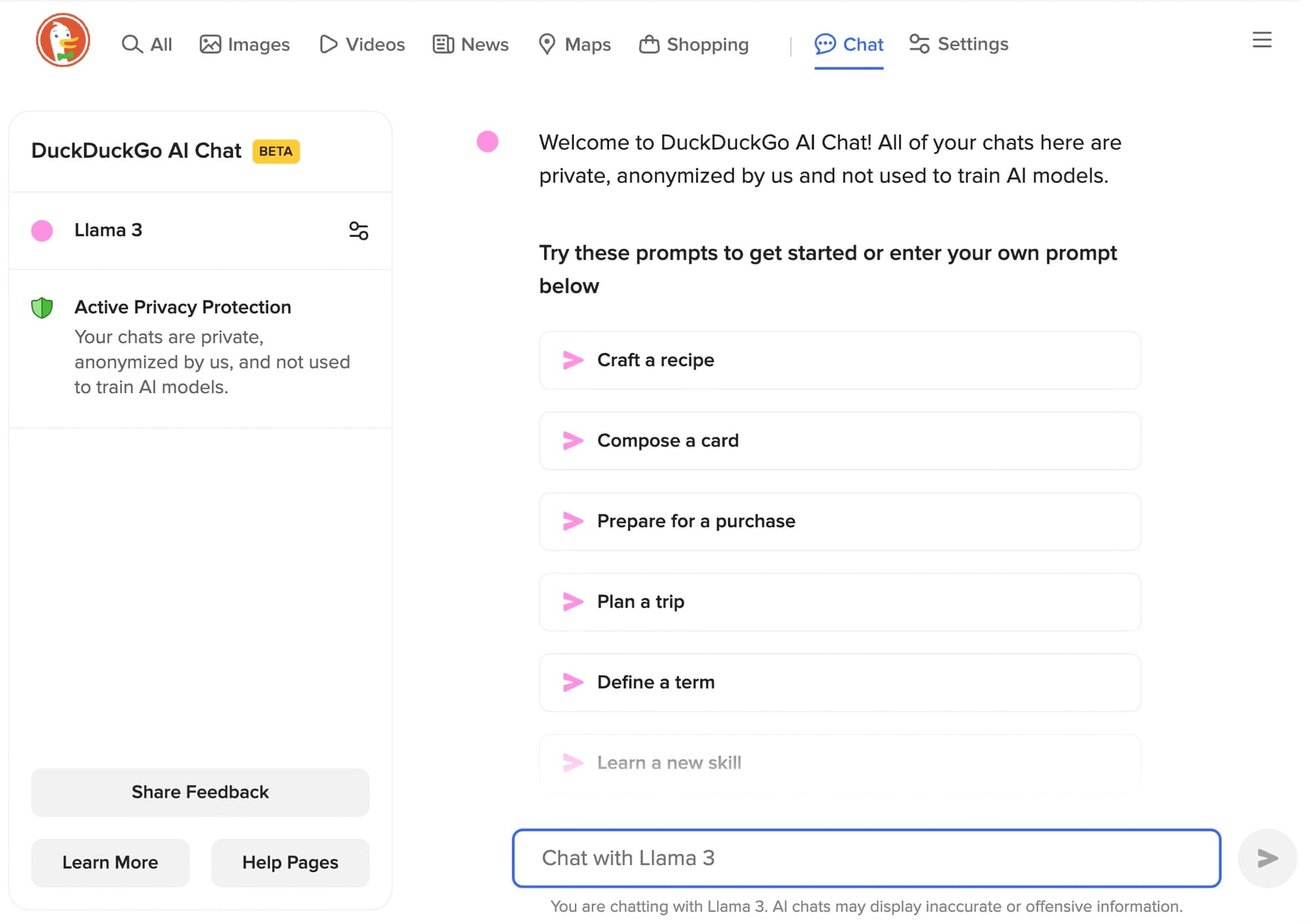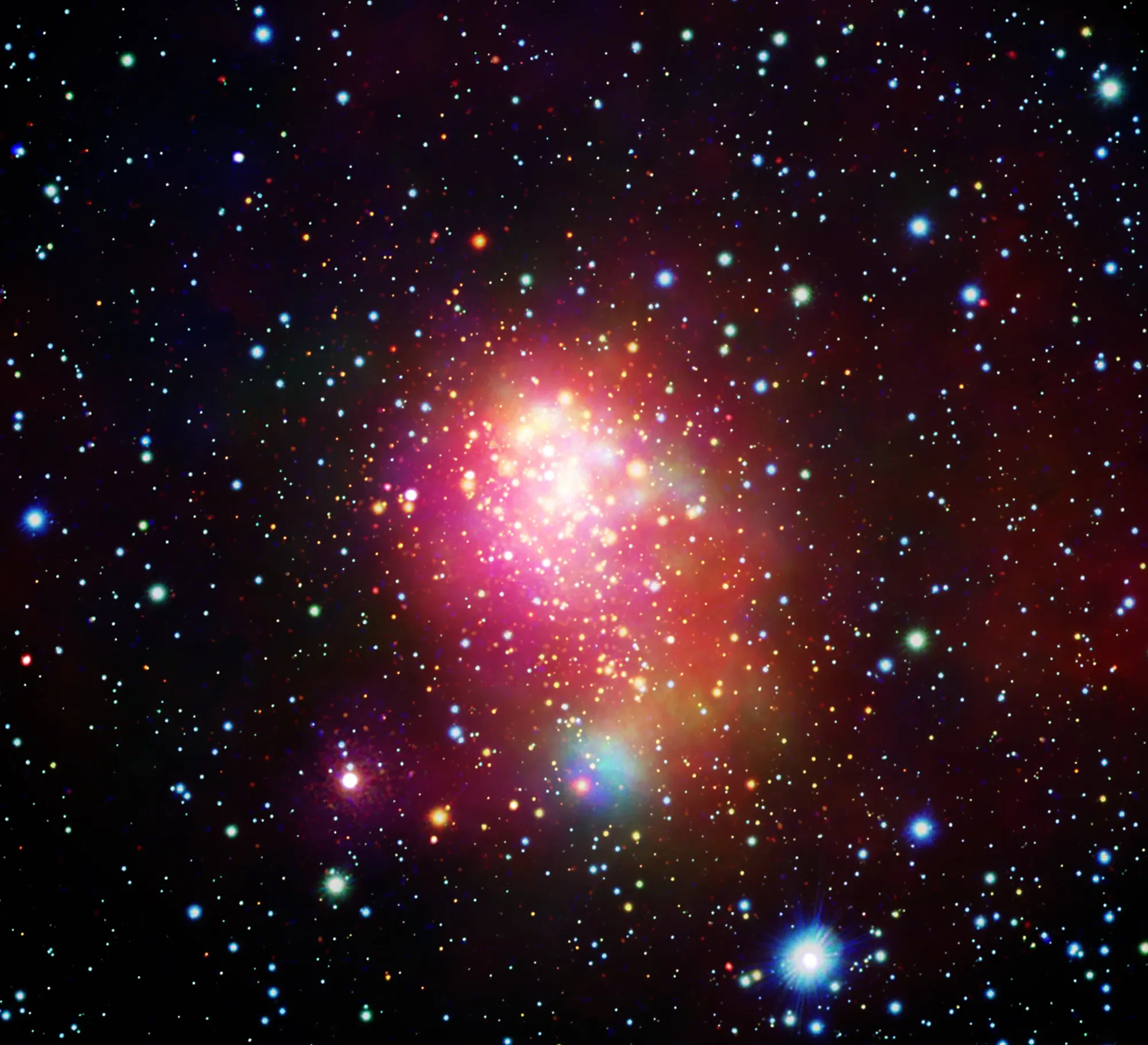DuckDuckGo releases portal giving private access to AI models
by Ryan Daws | AI News

DuckDuckGo has released a platform that allows users to interact with popular AI chatbots privately, ensuring that their data remains secure and protected.
The service, accessible at Duck.ai, is globally available and features a light and clean user interface. Users can choose from four AI models: two closed-source models and two open-source models. The closed-source models are OpenAI’s GPT-3.5 Turbo and Anthropic’s Claude 3 Haiku, while the open-source models are Meta’s Llama-3 70B and Mistral AI’s Mixtral 8x7b.
What sets DuckDuckGo AI Chat apart is its commitment to user privacy. Neither DuckDuckGo nor the chatbot providers can use user data to train their models, ensuring that interactions remain private and anonymous. DuckDuckGo also strips away metadata, such as server or IP addresses, so that queries appear to originate from the company itself rather than individual users.
Can LLMs Become Our New Moral Compass?
by John Nosta | Psychology Today

It's clear that large language models (LLMs) are smart—but moral, too? A recent paper suggests that these models can provide moral guidance that surpasses even expert human ethicists. This development opens up new possibilities and challenges for the integration of artificial intelligence (AI) in ethical decision-making, heralding an era where machines could complement human moral expertise.
What are validiums, and how do they work?
by JAGJIT SINGH | Cointelegraph

Validiums are a layer-2 scaling solution designed to optimize Ethereum’s performance by processing transactions off-chain.
Vailidiums are primarily responsible for reducing the load on the Ethereum blockchain by processing the majority of transactions off-chain and only sending concise proofs to the mainnet for verification. The off-chain transaction processing approach significantly boosts throughput and reduces congestion on the main network, resulting in a more efficient and cost-effective Ethereum experience.
🌙 NASA - Best Photo from Last Week
‘Super’ Star Cluster Shines in New Look From NASA’s Chandra

Westerlund 1 is the biggest and closest “super” star cluster to Earth. New data from NASA’s Chandra X-ray Observatory, in combination with other NASA telescopes, is helping astronomers delve deeper into this galactic factory where stars are vigorously being produced.
This is the first data to be publicly released from a project called the Extended Westerlund 1 and 2 Open Clusters Survey, or EWOCS, led by astronomers from the Italian National Institute of Astrophysics in Palermo. As part of EWOCS, Chandra observed Westerlund 1 for about 12 days in total.
Currently, only a handful of stars form in our galaxy each year, but in the past the situation was different. The Milky Way used to produce many more stars, likely hitting its peak of churning out dozens or hundreds of stars per year about 10 billion years ago and then gradually declining ever since. Astronomers think that most of this star formation took place in massive clusters of stars, known as “super star clusters,” like Westerlund 1. These are young clusters of stars that contain more than 10,000 times the mass of the Sun. Westerlund 1 is between about 3 million and 5 million years old.
This new image shows the new deep Chandra data along with previously released data from NASA’s Hubble Space Telescope. The X-rays detected by Chandra show young stars (mostly represented as white and pink) as well as diffuse heated gas throughout the cluster (colored pink, green, and blue, in order of increasing temperatures for the gas). Many of the stars picked up by Hubble appear as yellow and blue dots.
Only a few super star clusters still exist in our galaxy, but they offer important clues about this earlier era when most of our galaxy’s stars formed. Westerlund 1 is the biggest of these remaining super star clusters in the Milky Way and contains a mass between 50,000 and 100,000 Suns. It is also the closest super star cluster to Earth at about 13,000 light-years.
These qualities make Westerlund 1 an excellent target for studying the impact of a super star cluster’s environment on the formation process of stars and planets as well as the evolution of stars over a broad range of masses.
This new deep Chandra dataset of Westerlund 1 has more than tripled the number of X-ray sources known in the cluster. Before the EWOCS project, Chandra had detected 1,721 sources in Westerlund 1. The EWOCS data found almost 6,000 X-ray sources, including fainter stars with lower masses than the Sun. This gives astronomers a new population to study.
One revelation is that 1,075 stars detected by Chandra are squeezed into the middle of Westerlund 1 within four light-years of the cluster’s center. For a sense of how crowded this is, four light-years is about the distance between the Sun and the next closest star to Earth.
The diffuse emission seen in the EWOCS data represents the first detection of a halo of hot gas surrounding the center of Westerlund 1, which astronomers think will be crucial in assessing the cluster’s formation and evolution, and giving a more precise estimate of its mass.
A paper published in the journal Astronomy and Astrophysics, led by Mario Guarcello from the Italian National Institute of Astrophysics in Palermo, discusses the survey and the first results. Follow-up papers will discuss more about the results, including detailed studies of the brightest X-ray sources. This future work will analyze other EWOCS observations, involving NASA’s James Webb Space Telescope and NICER (Neutron Star Interior Composition Explorer).
NASA’s Marshall Space Flight Center manages the Chandra program. The Smithsonian Astrophysical Observatory’s Chandra X-ray Center controls science from Cambridge Massachusetts and flight operations from Burlington, Massachusetts.
Read more from NASA’s Chandra X-ray Observatory.
For more Chandra images, multimedia and related materials, visit:
https://www.nasa.gov/mission/chandra-x-ray-observatory/
Visual Description:
This is an image of the Westerlund 1 star cluster and the surrounding region, as detected in X-ray and optical light. The black canvas of space is peppered with colored dots of light of various sizes, mostly in shades of red, green, blue, and white.
At the center of the image is a semi-transparent, red and yellow cloud of gas encircling a grouping of tightly packed gold stars. The shape and distribution of stars in the cluster call to mind effervescent soda bubbles dancing above the ice cubes of a recently poured beverage.
News Media Contact
Megan Watzke
Chandra X-ray Center
Cambridge, Mass.
617-496-7998
Jonathan Deal
Marshall Space Flight Center
Huntsville, Ala.
256-544-0034


Disclaimer: None of the content in this newsletter is meant to be financial advice. Please do your own due diligence before taking any action related to content within this article.
Disclaimer: Unbound is reader-supported. When you buy through links on our site, we may earn an affiliate commission.






